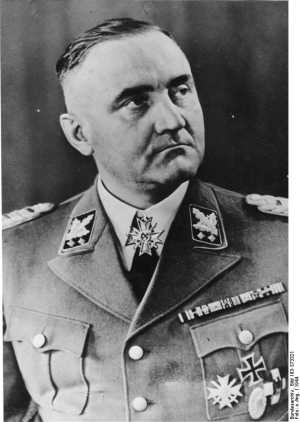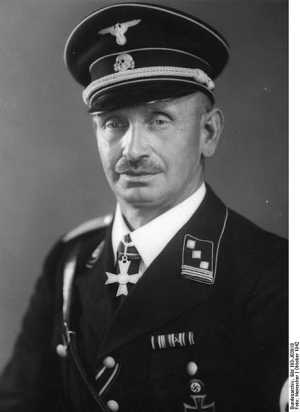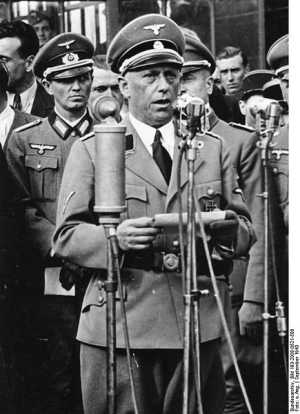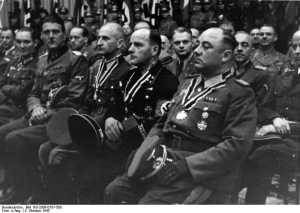War Merit Cross
a non-combat award for civilians and the military
By Stephen Sherman, Nov. 2008. Updated July 14, 2011.
The War Merit Cross, Kriegsverdienstkreuz, was introduced by Hitler in 1939, to recognize outstanding performance, not on the battlefield, by both civilians and members of the military; the military version included crossed swords, the civilian omitted them.
The War Merit Cross, Kriegsverdienstkreuz, was awarded for factory work that exceeded production quotas, for military supply and support, for propaganda work, etc., in short, for superior performance in any of the non-combat activities needed to support the total war effort of a Twentieth Century industrial state.
Then, like the Iron Cross, there were several grades of the War Merit Cross: Second Class, First Class, Knights Cross.
And there was one more variation: the War Merit Medal, essentially a "Third class" civilian award. Fairly early in WWII, the War Merit Second Class was being awarded to large numbers of civilians. To preserve the prestige of that award, the specifically civilian War Merit Medal was created in 1940.
War Merit Crosses - Civilian
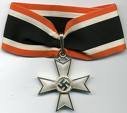 Knights' Cross
Knights' Cross
 First Class
First Class
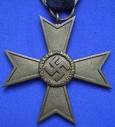 Second Class
Second Class
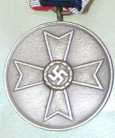 Medal
Medal
War Merit Crosses - Military
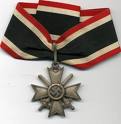 War Merit Cross, Knight's Cross
War Merit Cross, Knight's Cross
 War Merit Cross, 1st Class
War Merit Cross, 1st Class
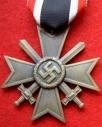 War Merit Cross, 2nd Class
War Merit Cross, 2nd Class
Four Recipients
Four recipients of the Kriegsverdienstkreuz are shown at left.Gottlob Berger was an SS Obergruppenführer (Lieutenant General) during World War Two and was later convicted of war crimes. In 1939, he was Heinrich Himmler's main recruiting officer. From 1940, he was Chief of Staff for the Waffen-SS. At Nuremburg, he was acquitted of organizing POW death marches, but later was found guilty of participating in the Holocaust; his sentence of 25 years commuted to 10 in 1951.
Ernst Ritter, the second one shown, was an obscure SS-Obersturmführer (Lieutenant).
General Julius Ritter (not known if related) was the assistant in France to Fritz Sauckel, who was responsible for the mobilization and deportation of labor in Nazi-occupied Europe, essentially he was the chief recruiter of slave labor in occupied France. The Maquis assassinated him in September, 1943.
General Helmut Körner is the heavy-set, balding fellow in the foreground. In the background, the mustachioed man to the left, is the infamous Otto Skorzeny, who sprung Mussolini from the Allies in 1943.


